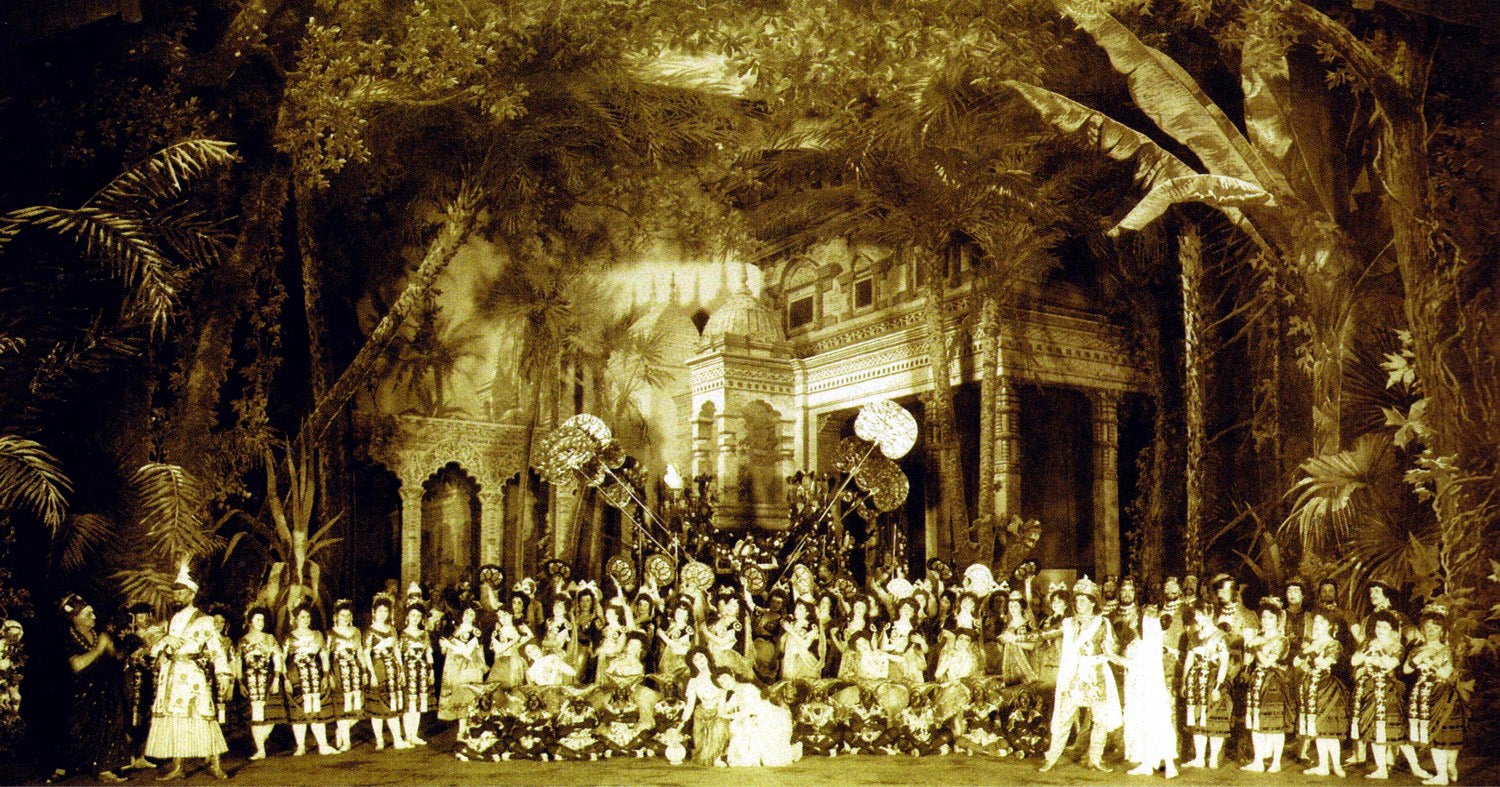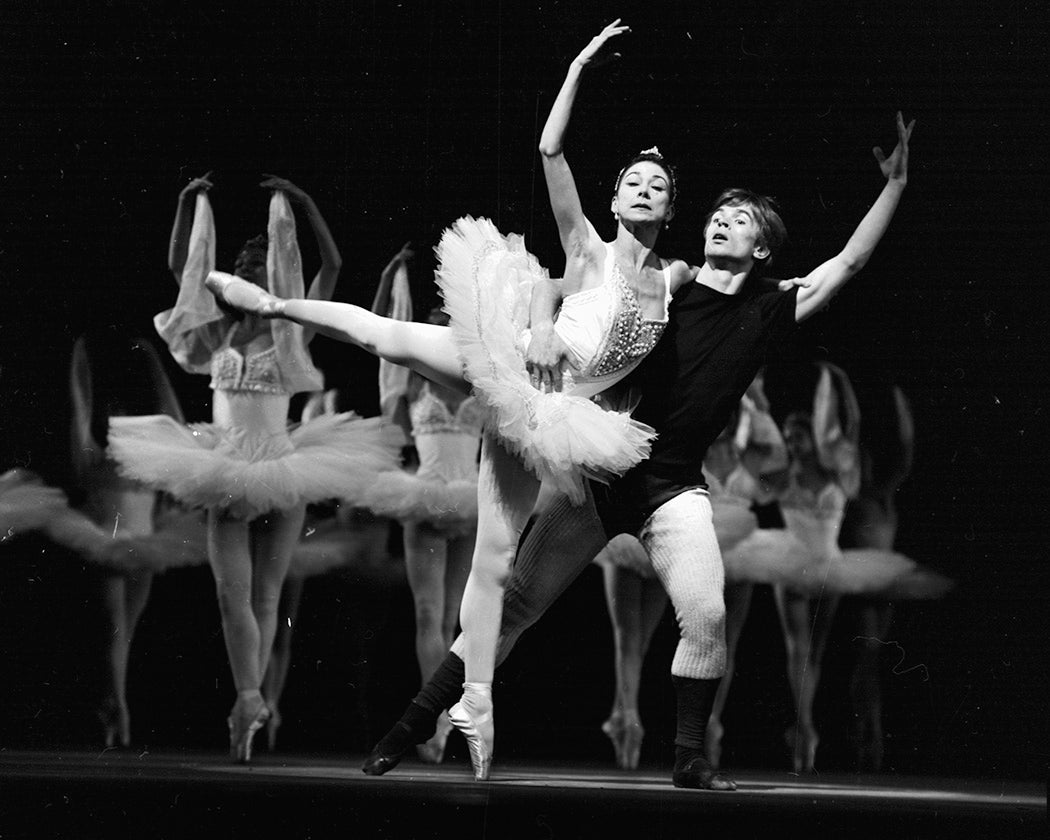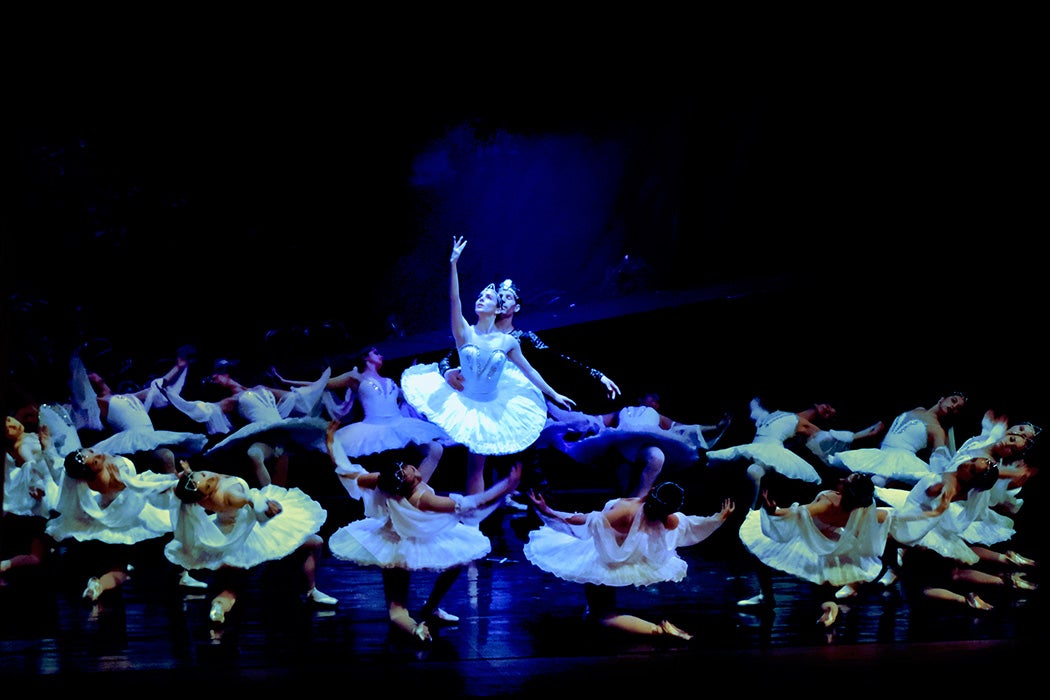The icon indicates free access to the linked research on JSTOR.
In March 2024, Dance Australia editor Karen van Ulzen published an op-ed stating that the nineteenth-century ballet La Bayadère was “in danger of being cancelled.” She was responding to an email campaign released by a self-proclaimed Hindu statesman named Rajan Zed, who called for West Australian Ballet to cancel its upcoming production of the ballet, which is set in an exoticized ancient India. La Bayadère, writes Zed, trivializes Eastern religious traditions and engages in ethnic stereotyping.
Each time a ballet company announces plans to stage La Bayadère, writes van Ulzen, Zed makes a similar objection. In addition to West Australian Ballet, Zed’s website lists recent pleas to the Latvian National Opera Ballet, Tbilisi Opera and Ballet State Theatre, Hungarian State Opera, and Boston Ballet to cancel their productions. Zed might be one of the loudest voices behind this cause, but he’s part of a chorus of protestors offended by the ballet’s dated portrayals of Indian culture.
In 2019, acclaimed ballerina Misty Copeland drew the public’s attention to an Instagram post showing two Russian dancers in head-to-toe blackface, ready to perform in the Bolshoi’s production of La Bayadère that year. Dana Nichols, who is herself a person of color, responded with a personal essay in Dance Magazine sharing that in 2003, when she was just eleven years old, she too was covered with dark brown grease paint to perform as a child extra in the Russian Mariinsky Ballet’s tour of La Bayadère in Los Angeles. While the use of blackface seems relegated to Russian productions, American ballet companies meantime are simply throwing their hands in the air, unsure of how to proceed.
La Bayadère made its world premiere in 1877 at the Bolshoi Theatre in Saint Petersburg, Russia. It’s a full-length story ballet choreographed by Marius Petipa—the same man behind The Sleeping Beauty, The Nutcracker, and Swan Lake—with a score by Ludwig Minkus. Its plot, filled with all manner of twists and turns, centers around an Indian temple dancer (known as a bayadère in the West) named Nikiya, who’s enmeshed in a complex web of jealousy and unrequited love. Nikiya’s romantic rival, Gamzatti, ultimately kills her, leaving her lover, Solor, to fall into an opium-induced dream that has him reuniting with her in the “Kingdom of the Shades,” a spectral realm filled with white-tutu-and-veil clad spirits dancing hauntingly in unison.
The ballet—its plot, character names, music, costumes, and choreography—has nothing to do with the real country of India. Petipa and his collaborators created La Bayadère as a fabrication of an exoticized idea of the Orient, stirred up by newspaper stories chronicling the Prince of Wales’s visit in 1875–76. A century later, after seeing American Ballet Theatre’s 1980 premiere of Natalia Makarova’s La Bayadère, dance critic Marcia B. Siegel wrote that
[t]he buildings and the landscape don’t look specifically Indian, but they do look made-up. What the nineteenth-century audience knew about Petipa’s India was that it was hot, heathen, and far away—in all respects outside of the moral and social sanctions under which they lived. To them the Orient was still a fairy tale, and a book of mysteries.
According to historian Vincent Warren, theatrical productions set in this exoticized India and centered around the idea of a bayadère stretch back even further than Petipa. In 1810, the Paris Opéra put on an opera-ballet titled Les Bayadères. An engraving from an 1821 revival of the opera shows “a temple or palace interior completely invented from the designer’s imagination,” writes Warren, adding, “The costumes were also fantasies on an insufficiently understood theme.” He explains that even the term bayadère is a creation that
does not exist in India but has come to mean “Indian Temple Dancer” in the West: the word “Bayadère” is essentially a corruption of the Portuguese “Bailadeira,” female dancer. In India, temple dancers are known as “devadasis,” servants of the god.
Despite this shaky foundation, many European companies—as Zed’s list shows—continue to program La Bayadère in their seasons, while American companies have largely set their productions aside. In response to Zed’s campaign, Boston Ballet released a statement clarifying that they’re only presenting an excerpt from La Bayadère this season—the romantic and abstract “Kingdom of the Shades.” In regard to the full-length production, the company “recognize[s] its problematic storyline and strongly disagree with its appropriation of South Asian culture.”
In 2022, when Susan Jaffe was announced as the new artistic director of American Ballet Theatre (following the previous director’s thirty-year tenure), Sarah L. Kaufman, then dance critic for the Washington Post, noted that Jaffe planned “to shelve, temporarily, those [classic nineteenth-century ballets] that contain offensive stereotyping or run counter to contemporary sensibilities.”

Given its offenses, is La Bayadère worth saving? Phil Chan and Doug Fullington think so. They’re the creative forces behind Star on the Rise: La Bayadère … Reimagined!, a new full-length production that premiered in March 2024 at Indiana University in Bloomington. Star on the Rise relocates the ballet from its original setting to 1920s Hollywood. In this reconception, Nikiya, now named Nikki, isn’t a temple dancer; she’s an aspiring dancer and actress. Solor is Sol, a popular actor, and Gamzatti has become Pamela Zatti, a major film star and Nikki’s professional, rather than romantic, rival.
For Chan, an arts administrator and educator, Star on the Rise is part of his larger advocacy work. In 2017, he co-founded Final Bow for Yellowface, an organization dedicated to eliminating outdated and offensive stereotypes of Asians in ballet. He’s since published a book on the topic, and he’s created the Gold Standard Arts Foundation, which works in tandem with Final Bow to offer resources and support for Asian American dance artists. Final Bow’s most visible impact to date is helping ballet companies and schools rethink the “Chinese” variation in their annual Nutcracker productions, which often include rice-paddy hat costumes, over-exaggerated makeup, and excessive shuffling and bowing.
Fullington’s background proves a perfect complement to Chan’s. A dance historian and musicologist, Fullington researches nineteenth-century French and Russian ballet. He’s one of a very small group of people left today who can fluently read Stepanov notation, a system that choreographers, including Petipa, used to preserve their work. Fullington and Chan first connected six years ago, when Fullington reached out to share a video of a reconstruction of the “Chinese” variation.
“As Final Bow was growing, we were just seeing the writing on the wall for these exotic portrayals of these other cultures,” Chan tells me. “He and I really aligned in terms of asking, how do we avoid succumbing to cancel culture?”
Once they started collaborating, it didn’t take long for them to choose the 1920s as the setting for Star on the Rise. Fullington had always felt that many of La Bayadère’s group dances, as shown in the Stepanov notation, looked a lot like traditional American dance hall steps. And when considering the melodramatic love triangle at the center of the ballet’s plot, Chan saw the 1952 film Singin’ in the Rain as an easy comparison. They used Singin’ in the Rain’s premise of a film inside a film as inspiration for what to do with La Bayadère’s folk dances and variations. In Star on the Rise, the ballet’s characters work on scenes from a cowboy picture. The famous “Kingdom of the Shades”—which Chan calls “a sublime expression of what classicism is”—becomes part of that narrative as well, allowing it to hew closely to the original.
Star on the Rise’s updated setting turns the exoticized lens onto ourselves—meaning Americans.
“How do we make the spectacle about us instead of those people over there?” asks Chan. “What is the most glittering American spectacular version of us that we can do? It’s the cowboy western fantasy, and then the glamorous Ginger Rogers, Fred Astaire, Busby Berkeley setting.”
This was made possible thanks to vintage music specialist and orchestrator Larry Moore, who took a simplified piano and two-violin rehearsal version of Minkus’s original score and reimagined it for a musical theater orchestra, imbuing it with the sound of the first half of the twentieth century.
“You hear it, and you’re like, how on earth could this sound like a Russian oriental score? Because it’s clearly cowboys,” says Chan. “They’re square dances. Why would this make sense in any other setting?”

While Moore worked on the score, Fullington was immersed in source material: choreographic notation of the ballet circa 1900 and musical scores from the period, both housed at Harvard University, and a pantomime script and Petipa’s notes, pulled from archives in Moscow. One of Fullington’s goals was to strip away the staging that had been added since Petipa’s time and take the steps back to the studs. The version that most American audiences are familiar with was recreated in the US by Makarova, who, like fellow dancer Rudolf Nureyev, defected from Russia during the Cold War. In turn, it was based, says Fullington, on a 1940s Leningrad version, itself a revision of the original material.
Before Nureyev and Makarova came to the US, most American audiences didn’t even know that La Bayadère existed. As Chan understands it, this “savage, wild side of ballet that we don’t really have here in the West” was new for viewers whose understanding of Petipa’s oeuvre was relegated to tamer, family-friendly works like The Sleeping Beauty and Nutcracker. Of Makarova’s La Bayadère—the same production that Jaffe has indefinitely shelved—Siegel noted that it was “as if someone had donated the unknown canvas of a famous painter to a museum.” She lamented not knowing where the original ended and Makarova’s additions started, comparing the restoration process to a game of telephone.
“That’s something like the process by which a ballet is turned into history,” she wrote. “Only each full-length ballet has thousands of these messages.”
Chan and Fullington were deep into conceiving Star on the Rise when Indiana University’s Jacobs School of Music Opera and Ballet Theater offered to produce the show with their student dancers and musicians. This was a godsend to its creators, who knew that in the wake of the pandemic it would be challenging to find a dance company with the funds to embark on such a large undertaking. They had eleven weeks to work with the students. Fullington staged the dances while Chan taught the mime, working to translate ballet’s traditional pantomime into gestures that would read to modern audiences. (For example, a marriage proposal, which in ballet would be signified by a dancer raising two fingers slowly, was instead represented by a dancer getting down on one knee.) The ballet’s premiere was live-streamed at the New York Public Library for the Performing Arts; its recording remains available to the public.
Shortly after van Ulzen’s Dance Australia op-ed appeared, Chan issued a response, explaining that he sees his work on La Bayadère as the opposite of “cancel culture.” Rather than throwing away, as he writes, anything “made by a white male European artist with a strictly Eurocentric gaze,” he wants to continue to push ballet toward reimagining the classics. The opera and theater worlds do this much more readily, and with much less pushback, he writes; after all, how many Shakespeare productions have been set in the modern day?
Chan believes that this is because of dance’s intangibility. There are no set notes to sing, or lines to recite. With notation forms all but entirely out of vogue, choreography is passed down body to body. He likens ballet to a wet tissue: “It’s decomposing in your hands at all times.”
Chan and Fullington don’t know when Star on the Rise will be back onstage. But they’re already onto their next challenge: Le Corsaire, an 1858 Petipa comedic ballet set in the Middle East, filled with pirates, slave girls, and an abundance of culturally insensitive imagery. They are reimagining it at a seaside casino beauty pageant, with mobsters instead of pirates.
“As someone who’s interested in pushing the boundaries forward, we have to know what our past looks like and embody that,” says Chan. “What do we really love about Bayadère? It’s the choreography to the music. So, we’ve kept it. We’ve made it better.”
Support JSTOR Daily! Join our membership program on Patreon today.

